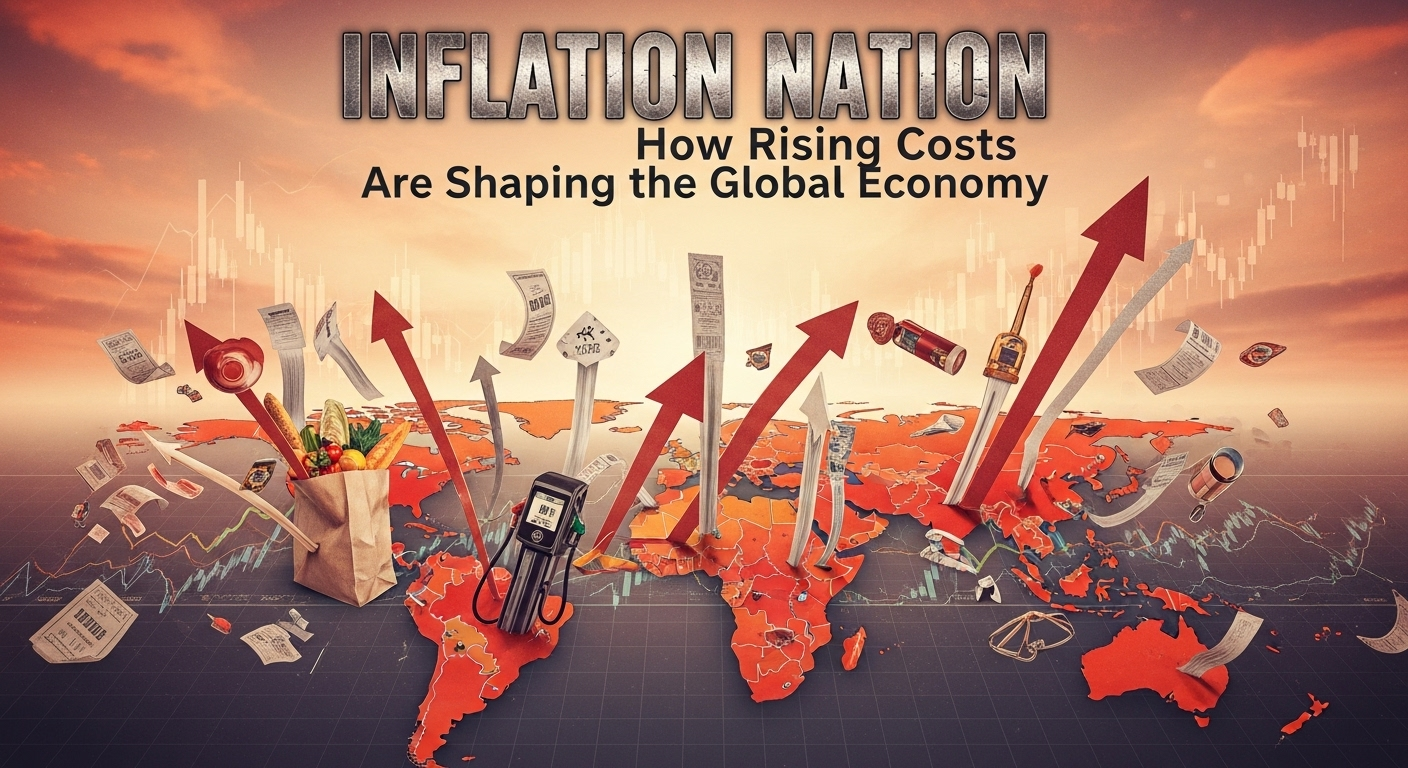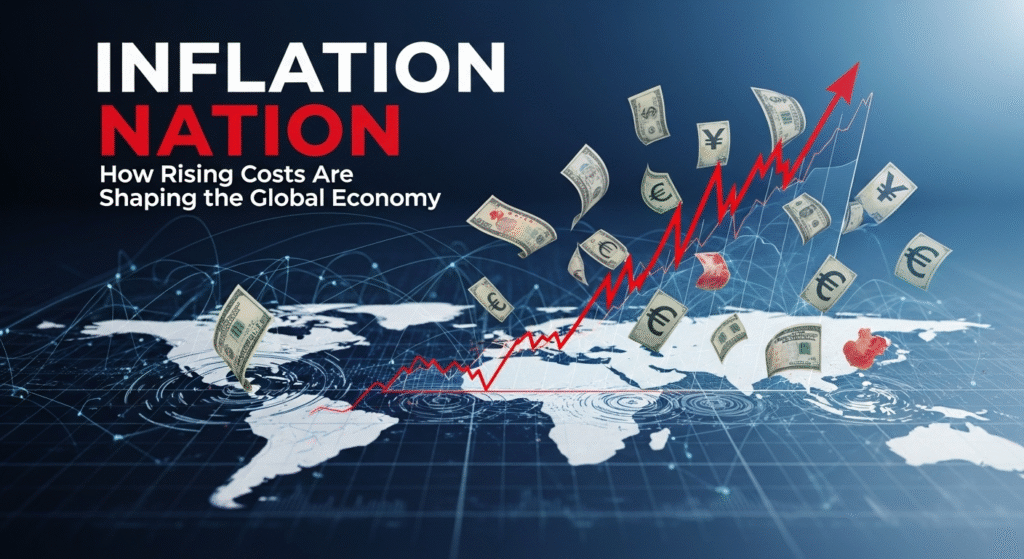Okay, let’s be real. Inflation. It’s not exactly the most thrilling topic, is it? I mean, unless you’re an economist who gets a kick out of supply and demand curves (no shade if that’s you!), it’s probably something you’d rather not think about. But here’s the thing: it is thinking about you. It’s affecting your wallet, your choices, and even the global landscape. So, buckle up – let’s dive into this Inflation Nation we’re all living in.
I remember, not too long ago, grabbing a coffee and a pastry for under five bucks. Now? You’re lucky if you escape without needing to raid your couch cushions. It feels like a sneaky tax, doesn’t it? That’s inflation in action, eroding the purchasing power of your hard-earned cash. And it’s not just coffee; it’s groceries, gas, housing – basically everything. Think about it this way, even digital economies are subject to inflation!
The Ripple Effect of Rising Costs

So, where does this inflationary pressure come from? Well, it’s rarely one single thing. It’s more like a perfect storm of factors. Supply chain bottlenecks – remember when you couldn’t find toilet paper? – definitely played a role. Increased demand as economies started to reopen after the pandemic added fuel to the fire. And let’s not forget government stimulus measures, which, while intended to help, also injected a whole lot of money into the system. Actually, that’s not quite right… it is a simplification to lump everything in together. It’s more complex than that, and the reasons are multifaceted.
But here’s the thing: inflation doesn’t affect everyone equally. Lower-income households feel the pinch much more acutely because a larger portion of their income goes towards necessities. When the price of food skyrockets, it’s a much bigger deal when you’re already on a tight budget. You might be wondering what a solution is.
Global Economic Shifts and Inflation
Inflation also has a knack for creating global economic shifts. Central banks around the world are raising interest rates to try to cool things down. That means higher borrowing costs for businesses and consumers. The idea is to slow down spending and investment, which, in theory, should help bring prices back under control. But it’s a delicate balancing act. Raise rates too aggressively, and you risk triggering a recession.
And it’s not just domestic policies that matter. Global events, like geopolitical tensions or trade wars, can have a significant impact on inflation rates. Disruptions to energy supplies, for example, can send prices soaring, impacting everything from transportation to manufacturing.
Strategies for Navigating the Inflation Nation
So, what can you do to weather this inflationary storm? Well, there’s no magic bullet, but there are some strategies that can help. For individuals, it might mean re-evaluating your budget, cutting back on non-essential spending, and looking for ways to increase your income. Investing in assets that tend to hold their value during inflationary periods, like real estate or commodities, could also be a smart move. It’s hard, I get it. It can feel overwhelming.
And for businesses, it’s about finding ways to improve efficiency, negotiate better deals with suppliers, and perhaps even pass some of the cost increases onto consumers (though that’s a tricky one). But remember that it is important to stay informed. Check out the latest news and keep abreast of the economy!
But here’s the thing I keep coming back to: inflation isn’t just an economic problem; it’s a human one. It affects our sense of security, our ability to plan for the future, and even our overall well-being. It creates uncertainty and anxiety. And that’s why it’s so important to understand it and find ways to mitigate its impact. I initially thought that the pandemic was the sole reason but actually, the situation is very complicated.
And, in some ways, it highlights the interconnectedness of the global economy. What happens in one country can have ripple effects that reach far beyond its borders. Staying informed and understanding these connections is crucial in navigating this complex landscape.
Future-Proofing Against Inflation: Long-Term Strategies
Thinking long-term is also key. Inflation, while painful in the short run, can also spur innovation and efficiency gains. Businesses are forced to find new ways to operate, and consumers are encouraged to be more mindful of their spending habits. Over time, this can lead to a more resilient and sustainable economy.
I’ve got to admit, this part fascinates me. It’s about adapting and evolving in the face of challenges. It’s about finding opportunities in adversity. And it’s about building a future where rising costs don’t have quite the same power to derail our plans. And one important thing is that rising costs also offer people with opportunities.
FAQ: Your Burning Questions About Inflation
How do I know if inflation is affecting my personal finances?
That’s a great question! The most obvious sign is that your money doesn’t seem to stretch as far as it used to. You might notice that your grocery bill is higher, or that it costs more to fill up your gas tank. Track your spending for a month or two, and compare it to previous periods. Are you spending more on the same items? If so, inflation is likely at play. Another clue is if your savings aren’t growing as quickly as you’d hoped, or if you’re finding it harder to save at all. It’s frustrating, but awareness is the first step.
Why are some products affected by inflation more than others?
Several factors can influence how much a particular product’s price rises during inflation. Supply chain issues, changes in demand, and the availability of raw materials all play a role. For example, if there’s a shortage of a key ingredient needed to make a certain food product, its price will likely increase more than a product that relies on readily available ingredients. Government regulations and taxes can also affect prices. Also, how inelastic is the product? Meaning, how much will demand change as prices change?
What can the government do to combat inflation?
Governments have a few tools at their disposal. One of the main ones is monetary policy, which involves controlling the money supply and interest rates. Central banks, like the Federal Reserve in the US, can raise interest rates to make borrowing more expensive, which can cool down spending and reduce inflationary pressure. Governments can also use fiscal policy, which involves adjusting government spending and taxes. For instance, they might cut spending to reduce demand in the economy. However, these actions can have unintended consequences, so it’s a balancing act.
Is there anything good about inflation?
Okay, it’s tough to see the silver lining when your wallet is feeling lighter, but hear me out. Mild inflation can actually be a sign of a healthy economy. It can encourage businesses to invest and expand, and it can make it easier for people to pay off debts. The frustrating thing about this topic is that rising prices incentivizes innovation, which in turn, can create new and cheaper alternatives. However, high inflation, like we’re experiencing now, is generally considered harmful.
So, there you have it – a little dive into the world of Inflation Nation. It’s a complex issue with no easy answers, but hopefully, this has given you a better understanding of what’s going on and how it’s affecting you. Now, if you’ll excuse me, I’m going to go find a coupon for that coffee…



